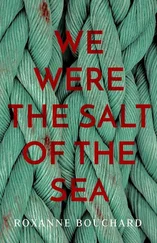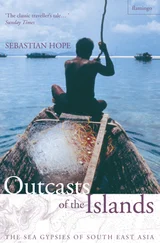Aztec rituals included large-scale cannibalism and it was also widespread on the Gulf and Pacific coasts of America, in parts of Africa, in New Guinea and throughout Melanesia and Polynesia. In Fiji, separate cooking pots and implements were reserved for human flesh, and the New Zealand Maori regarded it as one of the prime rewards of war.
In sixteenth-and seventeenth-century Europe, a form of cannibalism even had state backing. Human blood was believed to have therapeutic properties, particularly for epileptics. As a result, hanged criminals were often cut down while still alive, and bled to death by doctors. They distributed the blood among their patients in the crowd who brought their own cups to be sure of receiving a share.
A few notorious individuals apart, Europeans showed little taste for ritual cannibalism, but survival cannibalism was practised on a wide scale. Desperate populations were often forced to resort to it in times of famine and war. The inhabitants of castles and cities under prolonged siege ate whatever was to hand — cats, rats, leather and straw — but once even these were exhausted, the bodies of the dead and dying were often the only available food.
Soldiers of Napoleon’s army on the long retreat from Moscow turned to cannibalism, and the standard practice adopted by all armies of laying waste to a country as they withdrew, slaughtering or stealing the livestock and burning every crop, forced the survivors into a desperate search for food that could and did include human flesh.
There are several recorded instances of cannibalism among escaped convicts from the penal colonies of Australia and explorers in remote areas were often driven to the same desperate remedy. A number of cases were recorded in the exploration of the American West, and Arctic explorers were particularly vulnerable.
There were no survivors from Sir John Franklin’s expedition to the Arctic in 1845, but when rescuers finally reached the site, cannibalism was obvious, as a famous letter to the Admiralty stated, ‘from the mutilated state of many of the corpses and the contents of the kettles.’
In the early spring of 1829, a party of explorers chanced upon a crude hut on an uninhabited island in the Gulf of St Lawrence. Inside were ‘the carcasses of four human beings with their heads, legs, and arms cut off and their bowels extracted’.
A cooking pot over the long extinct ashes of a fire contained more human flesh. The blood-spattered walls and ceiling suggested that the victims had not gone quietly to their deaths. There were no survivors, for the body of another man lay in his hammock. The dead men were not explorers but the remnants of the twenty-man crew of the British ship the Granicus , which had wrecked on the island the previous autumn.
Seamen in dire straits had been resorting to cannibalism as long as ships had been wrecking, and the congenital instability of square-rigged ships, the difficulties of establishing longitude, inaccurate charts, the dangerous practice of carrying deck cargo, and the large numbers of overloaded, poorly constructed or maintained and incompetently crewed or captained vessels on the high seas ensured that shipwreck was a common occurrence.
Losses of ships were so frequent that The Times recorded only the most significant in its daily reports of ‘Disasters at Sea’. In the same year as the Mignonette was lost, another 560 British-registered ships went to the bottom, 397 of which were sailing vessels; 4,259 lives were lost — 1,490 passengers and 2,769 crew. Terrible as these figures were, 1884 was far from a bad year: three years earlier, no fewer than 838 sailing ships had sunk.
Some ship-owners provided so few stores that starvation and cannibalism were possible even without a wreck. Sir James Bisset recounted in his memoirs that, as a young man, he and the crew of the barque County of Pembroke had almost starved to death on a voyage from Callao to Falmouth.
Cannibalism occurred so often among sailors that it became a customary practice, complete with its own rituals. As surely as they knew that drinking sea-water would send them mad and kill them, all seamen were also aware that if they were starving, one of their number must be killed and eaten.
The victim was to be selected by casting lots. He was then bled to death so that his blood might be drunk, for thirst rather than hunger was usually the greater peril. The heart and liver — which were full of blood and the most perishable meats — were eaten at once. The rest of the body was then butchered.
Every seaman knew of the custom of the sea, and the course that was to be followed in similar dire straits, for survivors felt that it legitimized what they did and saw no reason for concealment. The custom of the sea was known not only from the tales of actual cannibal ships circulating among seamen, but also from the popular ballads, broadsheets and novels that circulated far beyond the forecastles and the dockside taverns.
W. S. Gilbert wrote a poem, ‘The Yarn of the Nancy Bell’, in which the ten survivors of a shipwreck were steadily reduced to one. It was turned down by Punch on the grounds of poor taste, but appeared in Fun magazine in March 1866.
…For a month we’d neither wittles nor drink,
Till a-hungry we did feel,
So we drawed a lot, and accordin’ shot
The captain for our meal.
The next lot fell to the Nancy’s mate,
And a delicate dish he made;
Then our appetite with the midshipmite
We seven survivors stayed.
And then we murdered the bo’sun tight,
And he much resembled pig;
Then we wittled free, did the cook and me
On the crew of the captain’s gig.
Then only the cook and me was left,
And the delicate question, ‘Which
Of us two goes to the kettle?’ arose
And we argued it out as sich…
Walt Whitman also referred to the custom of the sea in ‘I Sit and Look Out’, written in 1860.
I observe a famine at sea, I observe sailors casting lots who shall be kill’d to preserve the lives of the rest,
…All the meanness and agony without end I sitting
Look out upon,
See, hear and am silent.
There was a near endless tally of actual wrecks whose survivors had practised the custom of the sea: the Peggy , the Essex , the George , the Euxine , the Jane Black , the Cospatrick , the Sallie M . Steelman , the Caledonia , the Frances Mary , the Lady Frances , the Granicus , the Tiger , the Nottingham Galley , the Dolphin , the Mary , the Dalusia , the Lucy , the Earl Kellie , the Leader , the Blaise , the Anna Maria , the Earl Moira , the Jane Lowdon , the Polly , the Turley , the Elizabeth Rashleigh , the Hannah , the Earnmoor , the Home and the Nautilus is by no means an exhaustive list.
The most celebrated of all was the inspiration of Gericault’s famous painting, The Wreck of the Medusa . The finished painting shows no sign of the cannibalism that took place, but it is depicted in many of Gericault’s preliminary studies.
In July 1816, the Medusa ran aground off the African coast, on the Arguin Bank, near Cape Blanco. She was carrying 400 passengers and crew. A huge raft, some twenty yards by seven was constructed and 157 survivors boarded it. They had five barrels of wine, two of water and twenty-five pounds of ship’s biscuits, though these were contaminated by sea-water.
Читать дальше











